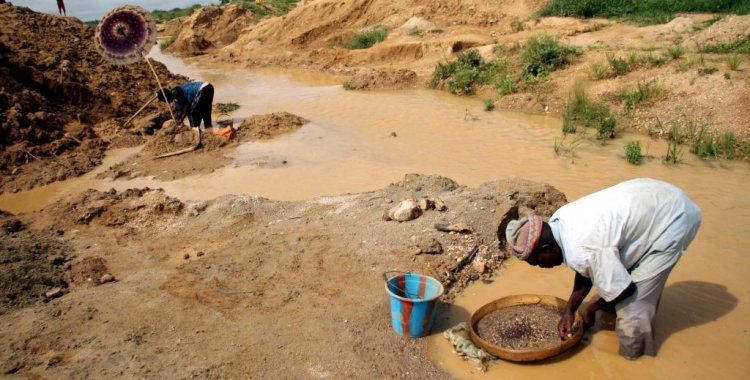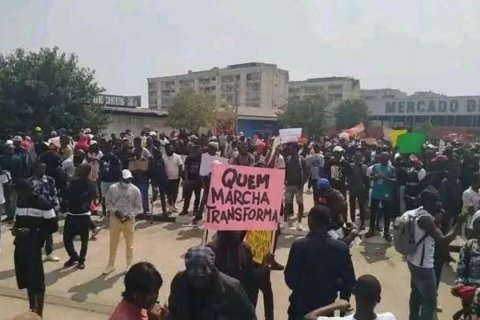In an interview to Lusa, Hélder Carlos, president of the management board of the Sociedade Mineira do Cuango (SMC), spoke about the conflictive relationship with the miners and the population of Cuango (north of the country), but stressed that the company wants to improve the sharing of wealth generated by diamonds by promoting more social responsibility initiatives.
"Given the concerns expressed by the communities, especially by the traditional authorities, the management of Endiama has been shaping a project that allows for greater support and more contributions," he stressed.
The region was the scene of incidents in late January, in the mining town of Cafunfo, where an alleged attempt to invade a police station, led by members of the Movement of the Portuguese Protectorate of Lunda Tchokwe, resulted in at least six deaths.
This official version is contradicted by local witnesses, non-governmental organizations and opposition parties, whose estimates point to more than 20 dead and speak of an attempt to protest in order to demand better living conditions.
Hélder Carlos acknowledged that "there is a history" of conflictive relations involving the mine and that what has been done for the communities is not enough, but he also pointed out some benefits, including the construction of elementary school, support for school lunches, construction of a pedestrian bridge over the Cuango River to facilitate circulation and construction of a social district for the more than 600 SMC workers, of whom about 400 are locals.
But the head of the mine also does not spare criticism for the mining activity that has "greatly damaged the operational activity.
The Cuango project is the result of a partnership between Endiama, ITM and Lumanhe, called Sociedade Mineira do Cuango, and covers an area of 3,000 kilometers in the Cuango river area, having started production in May 2005.
The mine manager explained that the miners operate in a disorganized manner and without respect for the environment, degrading the concession areas and ultimately damaging the reserves, or in other words, the mining potential of that area, and may even reduce the life of the mine.
"Garimpo, in itself, is a crime and greatly damages the companies," he stressed.
However, Endiama also has a new approach to the problem, he added, trying to fit garimpeiros into the formal activity, either in a semi-industrial way or as artisanal producers.
Hamilton Carvalho, deputy director of mining operations, says that "where there are mines, there is garimpo," and SMC is trying to find ways to combat illegal diamond exploration.
Access is restricted and the concession area is heavily guarded by private security companies.
In addition to the damage, Hamilton Carvalho also draws attention to the risks involved in the activity of garimpo, especially if techniques such as "majimba" are used, a method of underground exploration that consists of opening a vertical pit and building galleries to reach the ore.
"It is a high-risk activity, in water tables where the earth is not consistent, cave-ins always occur and when cave-ins occur we have deaths," he pointed out.
As for alleged human rights abuses, reported by garimpeiros, Hélder Carlos says the issue does not arise.
"The private company with whom we have a service contract to secure the perimeter of the concession area has had an irreproachable attitude in the way it deals with the communities, and even with the miners, guided by a culture of respect and didactic interventions to avoid any kind of conflict," he assures.
As for the traffic restrictions on the road connecting the municipality of Cuango to Cafunfo, one of the complaints of the local population, Hélder Carlos recalls that a mining area, "by the nature of its activity," requires safety rules given the dangers of accidents associated with the movement of the mine's own equipment.
"Still, exceptionally, and in view of the high degradation of the alternative road, we have allowed vehicles and people to circulate through our concession area," he added.
After an "atypical" 2020 year in which SMC was heavily penalized by covid-19, as a result of the drastic reduction in the workforce, the company is now trying to recover profits.
"For about eight months, production levels were sufferable, hovering around eight thousand carats. Starting in September, with the new teams, production went up again and we ended the year around 20 thousand carats", said Helder Carlos.
In January, the company produced about 22 thousand carats and, in February, it increased to 23,886 carats, with an average price around 400 dollars per carat.
SMC expects, therefore, to increase production and revenues this year: "By continuing with this pace and the way we restructured the operational activity of the company, with a new approach, we think so".
As for the social responsibility projects, there is no percentage defined for this purpose, since "the interventions always have a punctual character according to the needs that are being placed by the community", says Hélder Carlos.
SMC currently explores four fronts, where thousands of cubic meters of sterile earth are removed every day, covering the gravel, the layer where the ore is hidden and potentially the diamonds.
"Of course the exploration activity always creates impact, but we are guided by sustainable mining trying to minimize [these effects]. It is a responsibility that the State itself charges us with", sustains Hamilton Carvalho.
SMC minimizes the environmental impact caused by deforestation and land movement through reforestation with native species, having its own nursery.
Last year 1851 plants were planted, and another 6000 trees are expected to be planted in 2021.
The mine also has a community plow and a greenhouse where it plants vegetables to distribute to schools and villages, as well as a project to recycle plastic bottles and aluminum cans.
After being removed by bulldozers and excavators, the ore is sent to washing plants where it is cleaned and separated according to its granulometry.
From there it goes to the "chopping" table, where it is submitted to a manual selection process, according to light reflection.
"All the ore that reflects the light is captured and falls into a tray where it will be separated manually," explains Hamilton Carvalho, during a visit to the mine.
Brilliance, color and weight determine the diamond's value. After being cleaned, sorted and weighed, the stones undergo an acidification process that removes impurities and are then reclassified again. Only then are the rough diamonds ready to be exported, to markets such as China, Dubai, India and Antwerp, where cutting is done.
SMC's deputy director estimates that the mine has the potential for at least another 15 years of exploration.
"The mine's production always varies depending on the operating costs and the gross revenue collected. Therefore, every year there is a production plan that will dictate the vitality of the mine," he said.
Angola is the world's fourth largest producer of diamonds, with an average annual production of about nine million carats by 2019.
The forecast, in 2020, was to increase to 10 million carats, but due to the covid-19 pandemic, production levels fell below six million carats.
By 2021, production is expected to be around 11 million, and by 2022 production is expected to be 14 million, according to Endiama data.







